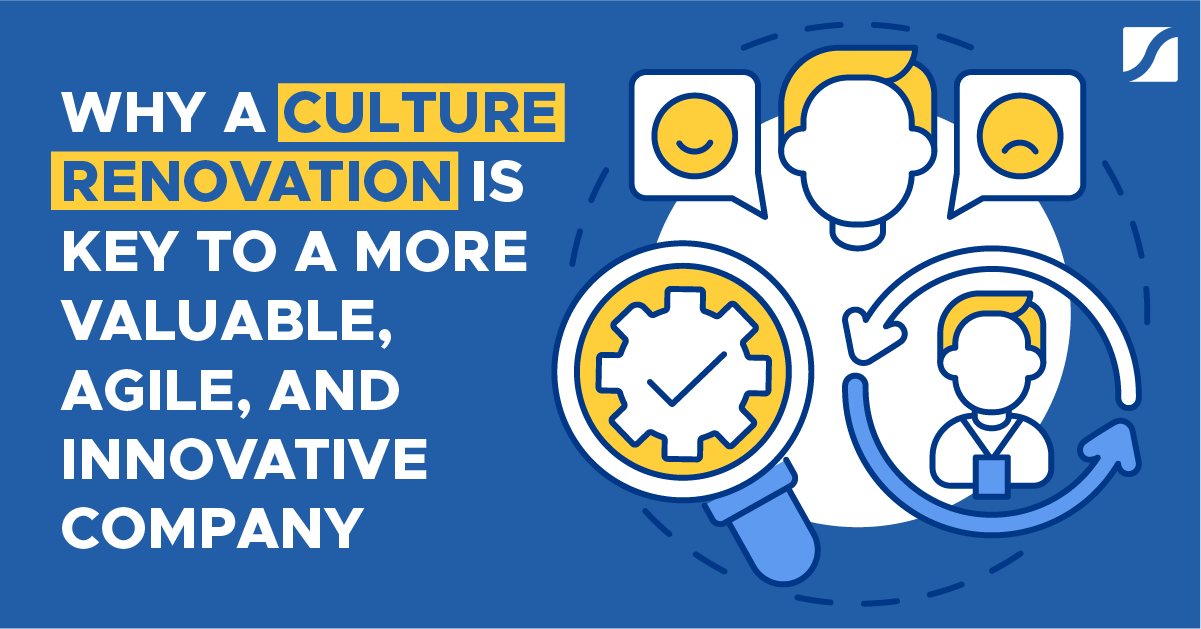The Key To Guarantee A 300% Return On Investment For Your Business


It might sound crazy that you can enjoy a 300% return on investment from learning initiatives.
But here's the thing: In today's markets, executive and employee training is a must.
Most CEO’s feel that they have exhausted every business trick in the book to maintain profitability and avoid losses. Yet only the most prescient realize that a simple investment can pay huge returns in good times and bad. It's the ultimate ‘secret sauce’ to consistently beating your direct competitors and maintaining a sustained advantage over them.
In study after study, the return on investment (ROI) in developing a company’s human capital is consistently higher than almost any other investment a company can make.
Here's how today's CEOs and business leaders can enjoy the superior performance and financial returns from investing in their most valuable asset, their people.
What Jack Welch Knew About His Corporate University
David Kaplan reveals in Verne Harnish’s first book The Greatest Business Decisions of All Time that perhaps Jack Welsh’s most enduring decision was to create a world-class internal business school for GE managers, known as Crotonville.
When Jim Baughman, a former Harvard Business School professor who was running Crotonville gave Welsh a chart-filled preview of his presentation to the GE board of directors, Welsh replaced the specific “payback analysis” figure on the last chart with the word “Infinite,” to underscore Welsh’s belief in the limitless ROI for Crotonville.
Now, most of us aren’t Jack Welsh. And we certainly can’t afford our own in-company university, but that’s no reason to not embrace what Jack Welsh knew...that when it comes to investing in your people, the return is infinite.
The Long-Term Potential of Employee Learning and Development
Many CEO’s inherently understand the obvious benefits of employee training; to ensure employees are competent, knowledgeable and safe in their jobs, plus the additional benefits of employee attraction and retention.
But they might not know that such an investment can actually produce quantifiable value that contributes to the bottom line.¹
Data from many recent studies provide evidence to suggest that organizations that invest in more training days and dollars per employee produce greater revenue per employee than those that invest less in this important human capital process.
The preeminent research economist in this area, Dr. Laurie Bassi found in her book, “The Good Company”, that the biggest single predictor of a company’s ability to beat its direct competitors in its industry and the overall stock market was the amount the company spends on training its people.
Bassi created stock portfolios (A-F) comprised of companies that invested heavily in training. The companies in those portfolios consistently outperformed the S&P 500. Remarkable ROI’s were achieved, ranging from 300 to 600%.
In fact, making investments in people development almost always trumps the investment returns made in hard or capital assets.
Where The Long-Term Benefits Of Training Get Dragged Down
So what benefits might a company might expect by focusing more dollars on education and training of its people?
The list includes such things as:
- increased ability to cope with, adapt to and learn from rapidly changing environments
- enhanced intra-company communication, teamwork and problem- solving skills
- greater self and leadership awareness skills
- enhanced morale and energy
- better employee/management relations
- improved employee retention
- and the ability to track other industry ‘A players’ to your team.
Specifically, companies that train their managers and supervisors are market leaders achieving consistently higher results, including:
- 24% higher profit margin
- 218% higher income per employee
- 86% higher company value
- 21% increase in productivity
- 300% reduction in employee turnover a return per dollar invested of $6.72²
With these types of eye popping financial results, why don’t more CEO’s embrace funneling more dollars into their training programs?
Again, from Dr. Bassi,
“There is an increasing return to learning for all who invest in it. But therein lies the catch-22. Investing requires a long term focus; it requires an ability to balance the trade-off between profits in the here-and-now for greater returns in the future."
"In publicly traded firms, investments in employee development are counted as overhead costs in annual reports and financial statements.
Hence, one way to boost profits in the short run is to cut these costs. But doing so increases the likelihood that future productive capability will be harmed, since those cut “costs" are actually investments necessary for future production and growth. In essence, traditional measurement fuels short-termism... this has resulted in a chronic tendency to under invest in the people side of the business."
The lesson? Find a way to balance that tension – where employees are both a cost and and asset to employers.  In today’s highly competitive global environment, companies that don’t make effective and continuous investments in training their people will continue to underperform those companies that do.
In today’s highly competitive global environment, companies that don’t make effective and continuous investments in training their people will continue to underperform those companies that do.
To gain and maintain a permanent competitive advantage, consider implementing some of the suggestions outlined below.
What's The Most Effective Development Method?
Change efforts that stick start at the top. Here are some different ways you can develop your company.
Start by asking yourself,
“Do I have the education and skills I need to be the best leader I can become?”
If not, consider getting yourself a coach or mentor.
Most great leaders can point back to an experience or person where they learned key best practices or something about themselves that could have only been revealed through a close relationship with someone who has already “been there, done that” and can provide the wisdom to see through the fog.
You can’t do it alone.
And for that reason, researchers have equated the success of most training initiatives to the level at which the HR function has achieved respected standing within the organization.
Does the head of your HR function have a legitimate seat at the table in your top management team or executive committee?
Appointing someone to be specifically accountable and responsible for corporate training and development, your Chief Learning Officer, if you will.
This isn’t necessarily the same person who is responsible for compensation and benefits, but someone you trust to drive training initiatives which support the execution of your corporate strategy.
For the rest of the organization, consider e-learning.
It might be counterintuitive, but research has shown that “well constructed e-learning is not only faster and less expensive than classroom training but also more effective."³
This comes from indications that multimedia training helps people learn faster, retain knowledge longer, and can more effectively implement that knowledge into results.
Even more, similar studies have even found a 15 to 25% increase in learning.³
Additional benefits of e-learning? It saves me, minimizes out of office time and travel expenses, provides consistent content delivery and is easily used in multiple locations. With today’s technology, you can deliver industry and role-specific learning via webcasts and video streaming.
Innovative firms especially now experiment with a highly effective learning and communication technique known as Forum, borrowed from the Young Presidents Organization (YPO).
Small 8-10 person Forum groups whose members are from diverse areas of the company meet with one another on a monthly basis. They discuss personal and company related issues in a confidential and safe environment.
This technique promotes trust and facilitates improved communication across company ‘silos.’ Most CEO’s who have supported this process have witnessed huge gains in the maturation on process of their employees.
The best part? The technique is essentially cost-free.
How Much Should You Spend On Learning and Development?
One of the most frequently asked questions are “What’s the ‘right’ amount to budget for corporate training?”
As you can imagine, there is no ‘right’ answer. But, as our economy moves away from manufacturing to become more services based, the percentage of a company’s administrative payroll to sales ratio continues to increase.
Consider basing your initial budget for training at about 2% of current payroll. You should expect to see outstanding returns as early as 6-12 months after initiating a comprehensive training approach.
Think about the gap that currently exists between your company’s current reality and where you want your strategy to take you.
Now that you’ve got a budget in mind, how should you think about committing those dollars?
Experts debate where an organization receives the biggest “bang for its buck” when spending training dollars. Is it on leadership, managers, administrators or at the blue collar/worker level?
Consider spending at all four levels to help facilitate organizational alignment. Spending allocations, however, should vary based upon what it will take to successfully execute around your corporate strategy. Think about the gap that currently exists between your company’s ‘current reality’ and where you want your strategy to take you.
Your business strategy should drive the quality and quantity of how you choose to develop you learning management system.
Many CEO’s conclude that the greatest percentage of their dollars should be committed to the leadership team, the "C" suite, since those folks are ultimately charged with looking forward and driving the strategic plan’s execution.
But your company’s greatest current ‘gap’ may be around production issues, in which case training your plant manager to help take him ‘to the next level’ might be the best way to boost productivity.
Many companies have union labor where the union is primarily charged with skills training. But don’t forget that there are respected ‘informal’ (non-titled) leaders in their ranks, and studies have shown that “manufacturing firms implementing training programs can expect an average gain of 17% in manufacturing productivity.”⁴
Every situation is different, but for initial budgeting purposes, consider spending with this ratio in mind:
- 40% of allocable dollars on ‘C’ suite leaders,
- 30% on mid to high level managers,
- 20% on supervisors/administrators
- and the balance on line/production workers
Want to start creating a culture of learning for your company and get a 300% return on your investment?
Get the step-by-step process by downloading the guide below.

REFERENCES
1 Rachele Williams and Lawson Arne , The ROI of Employee Training and Development: Why a Hearty Investment in Employee training and Development is so Important, a joint APQC (American Productivity and Quality Center), IBM and Workforce Management Study, p 1.
2 Business Training Experts, Training Benefits, Your Supervisors and Managers will Achieve Extraordinary Results, Your Company Performance will Exceed Expectations (ROI). Statistics cited in order; 24 and 86% American Society for Training and Development (ASTD) and Saba, Profiting from Learning: Do Firms’ Investment in Education on Pay Off?, 21% University of North Texas and Wayland Ba st University, Effects of leadership Training on Manufacturing Productivity, 300% Business Week Workforce Study, $6.62 Federal Reserve Board of Governors and Georgetown University, Human Capital Investments and Firm Performance.
3 How E-Learning Can Increase ROI for Training, THINQ’s Research department, Lifelong Learning Magazine at www.llmagazine.com/e_learn/resources/pdfs/ROI_training.pdf.
4 Donald W. Knox and Michelle Walker, Business Training Experts, Effects of Leadership Training on the Manufacturing Productivity of Informal Leaders, referencing Kapp, p 2.



